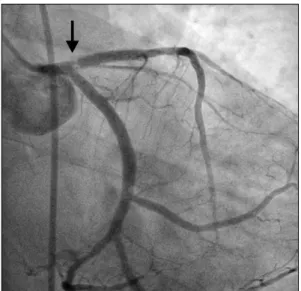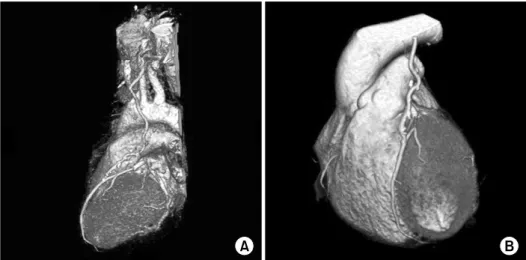Korean J Thorac Cardiovasc Surg 2011;44:288-291 □ Case Report □ DOI:10.5090/kjtcs.2011.44.4.288 ISSN: 2233-601X (Print) ISSN: 2093-6516 (Online)
− 288 −
*Department of Thoracic and Cardiovascular Surgery, Asan Medical Center, University of Ulsan College of Medicine
**Department of Thoracic and Cardiovascular Surgery, Sunchoen St. Carollo Hospital Received: December 17, 2010, Revised: April 10, 2011, Accepted: May 31, 2011
Corresponding author: Suk-Jung Choo, Department of Thoracic and Cardiovascular Surgery, Asan Medical Center, University of Ulsan College of Medicine, 388-1, Pungnap-dong, Songpa-gu, Seoul 138-736, Korea
(Tel) 82-2-3010-3954 (Fax) 82-2-3010-6966 (E-mail) sjchoo@amc.seoul.kr
C
The Korean Society for Thoracic and Cardiovascular Surgery. 2011. All right reserved.
CC

